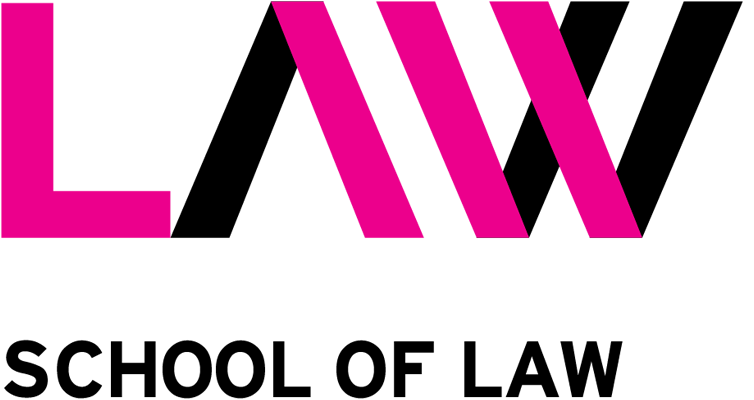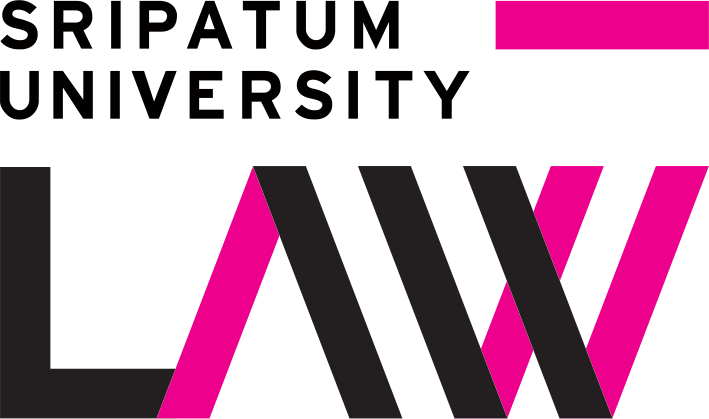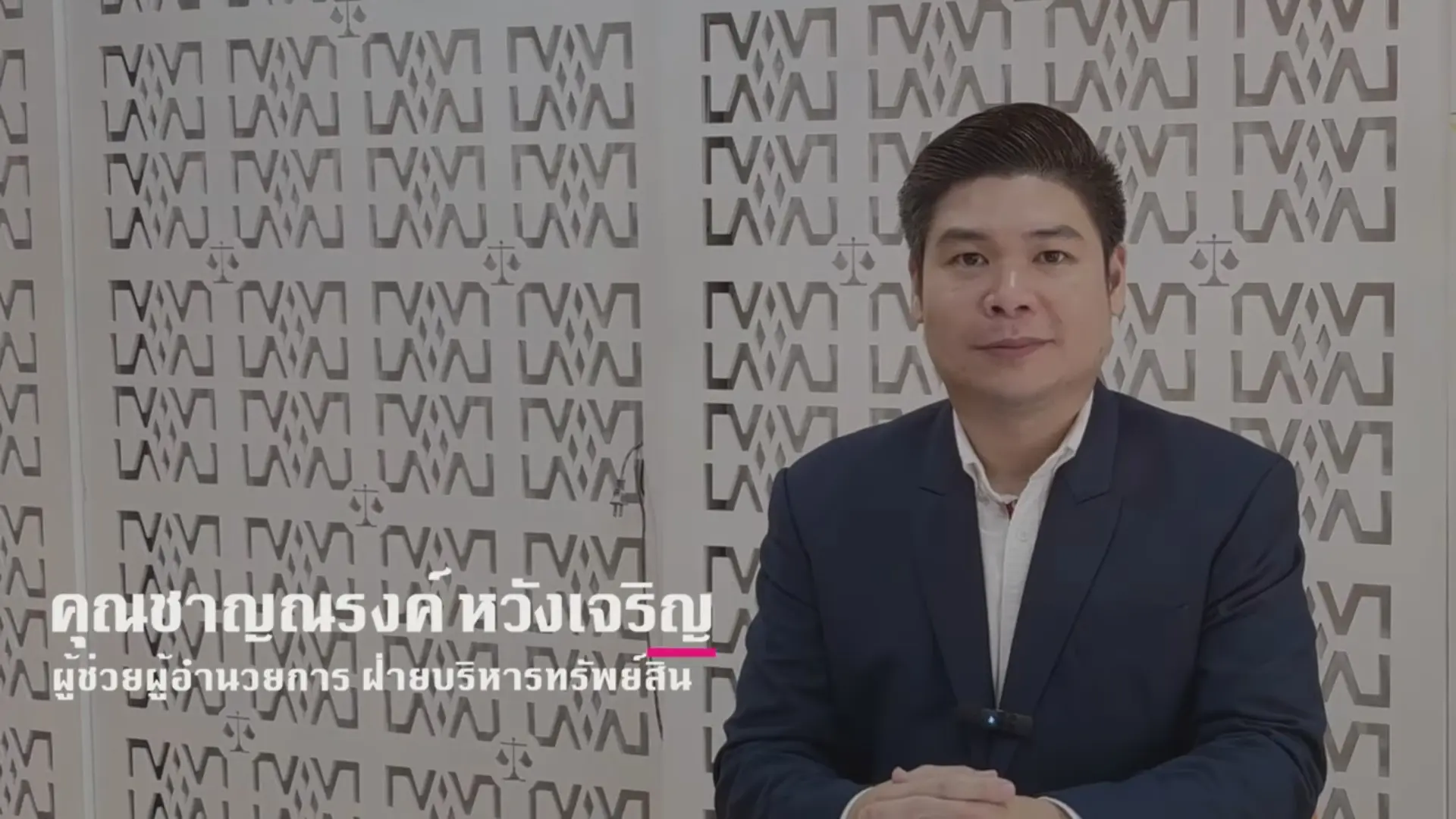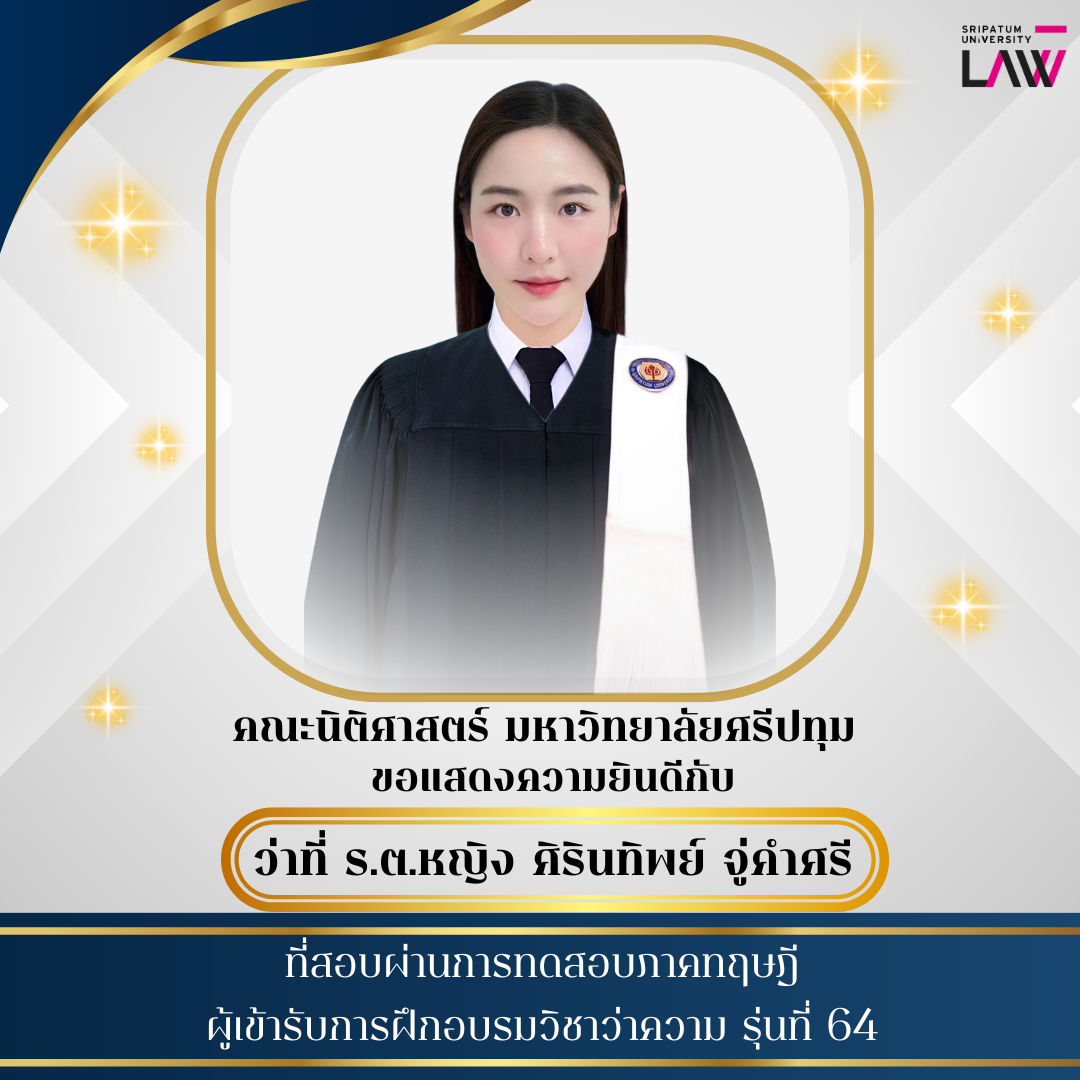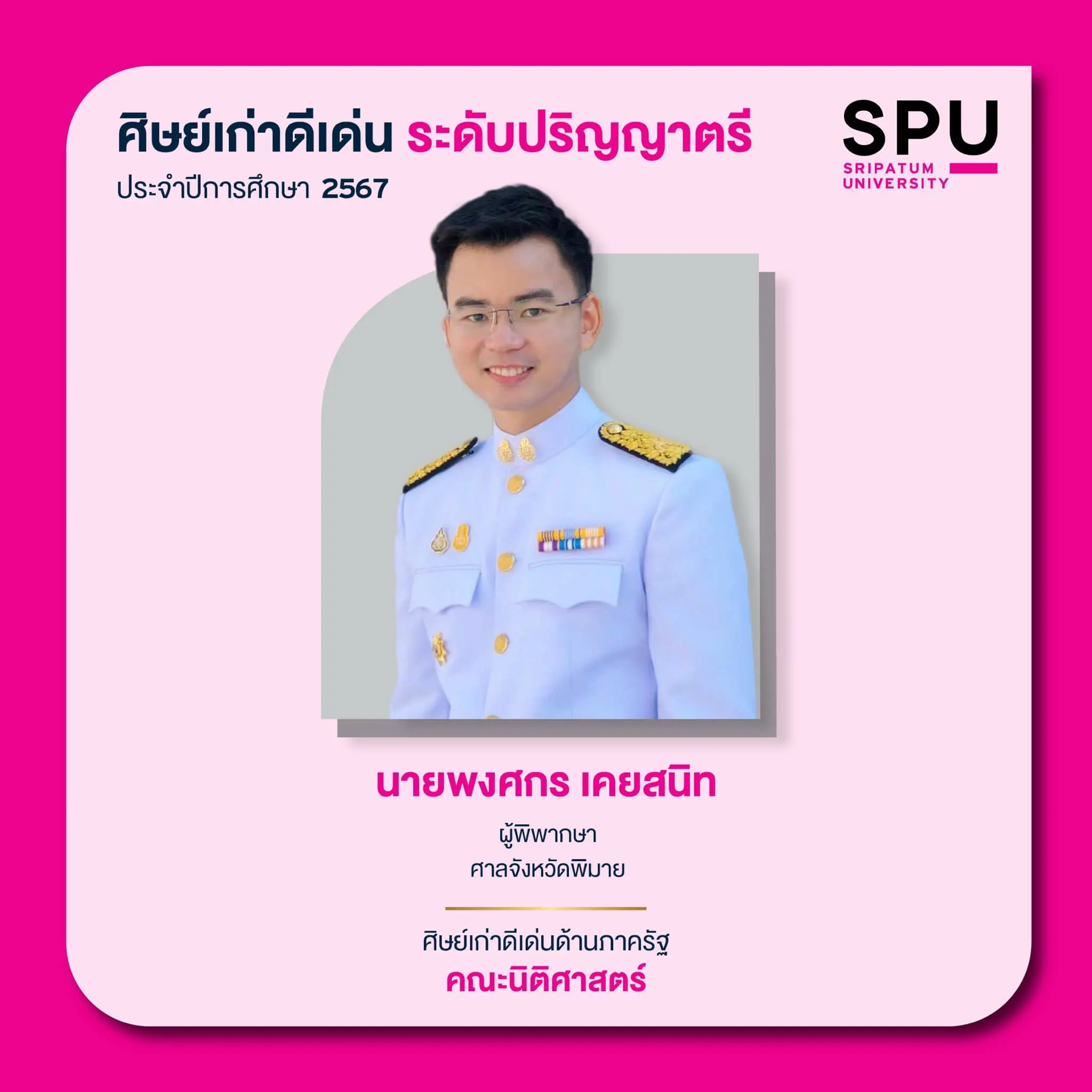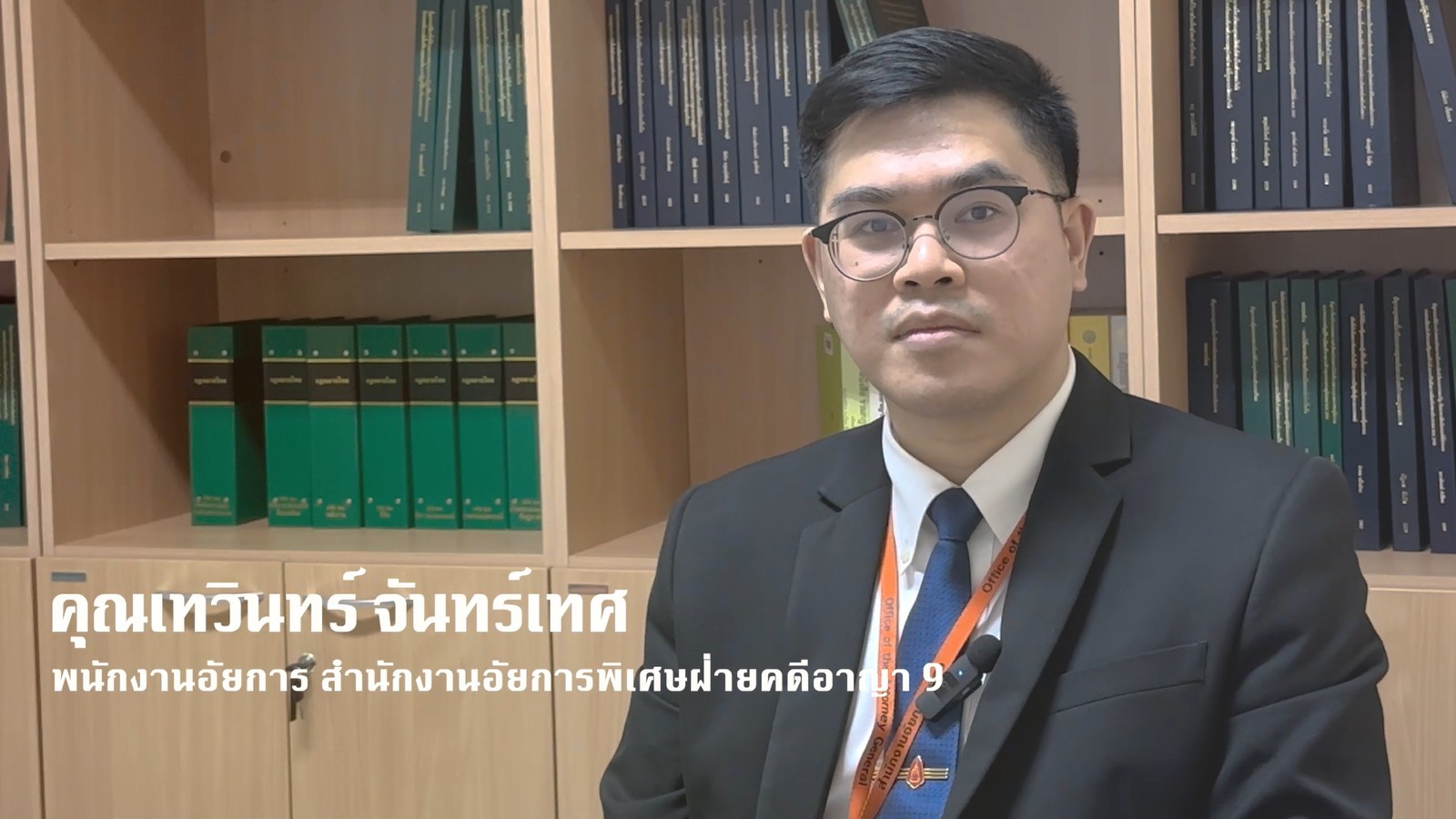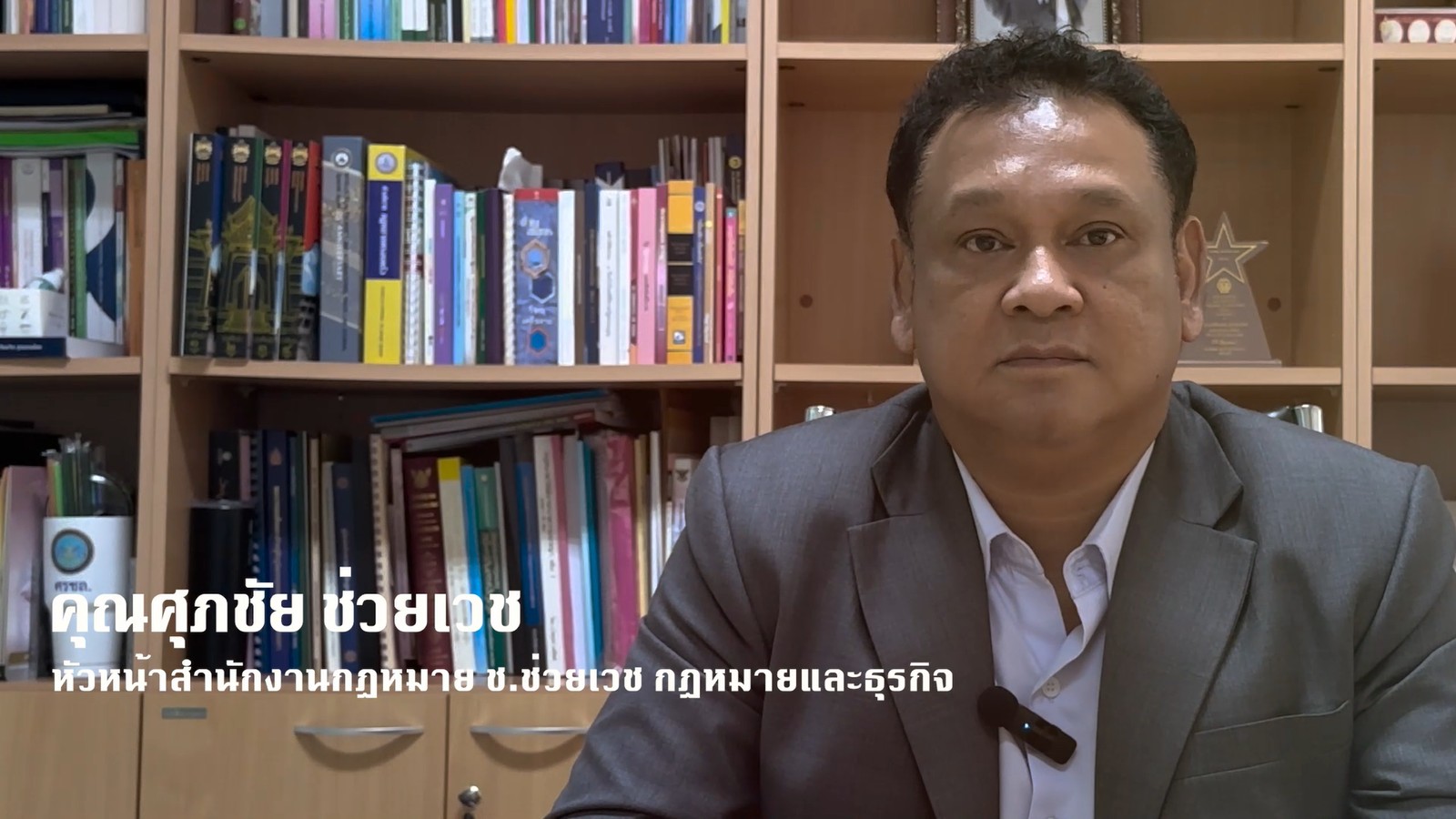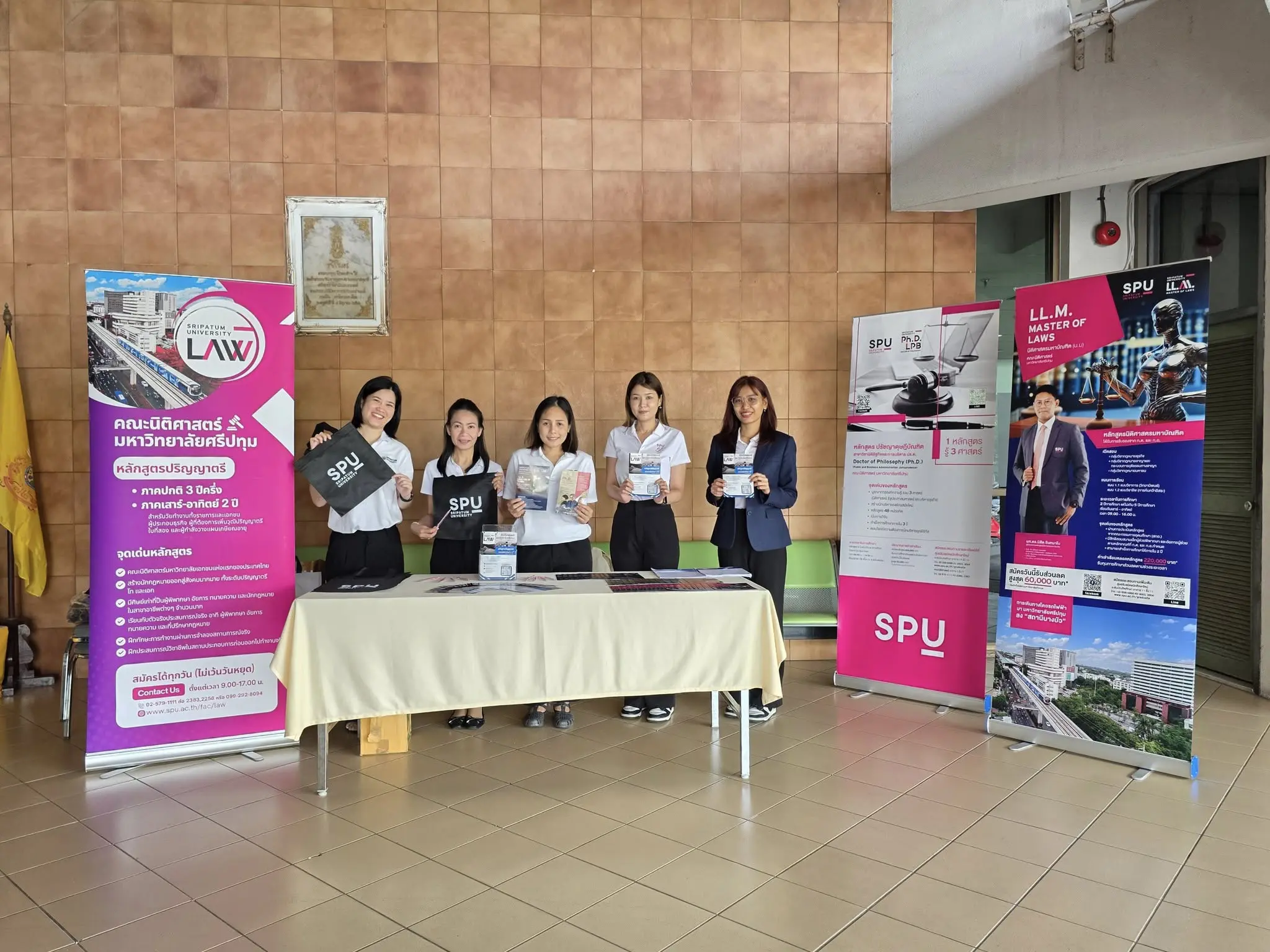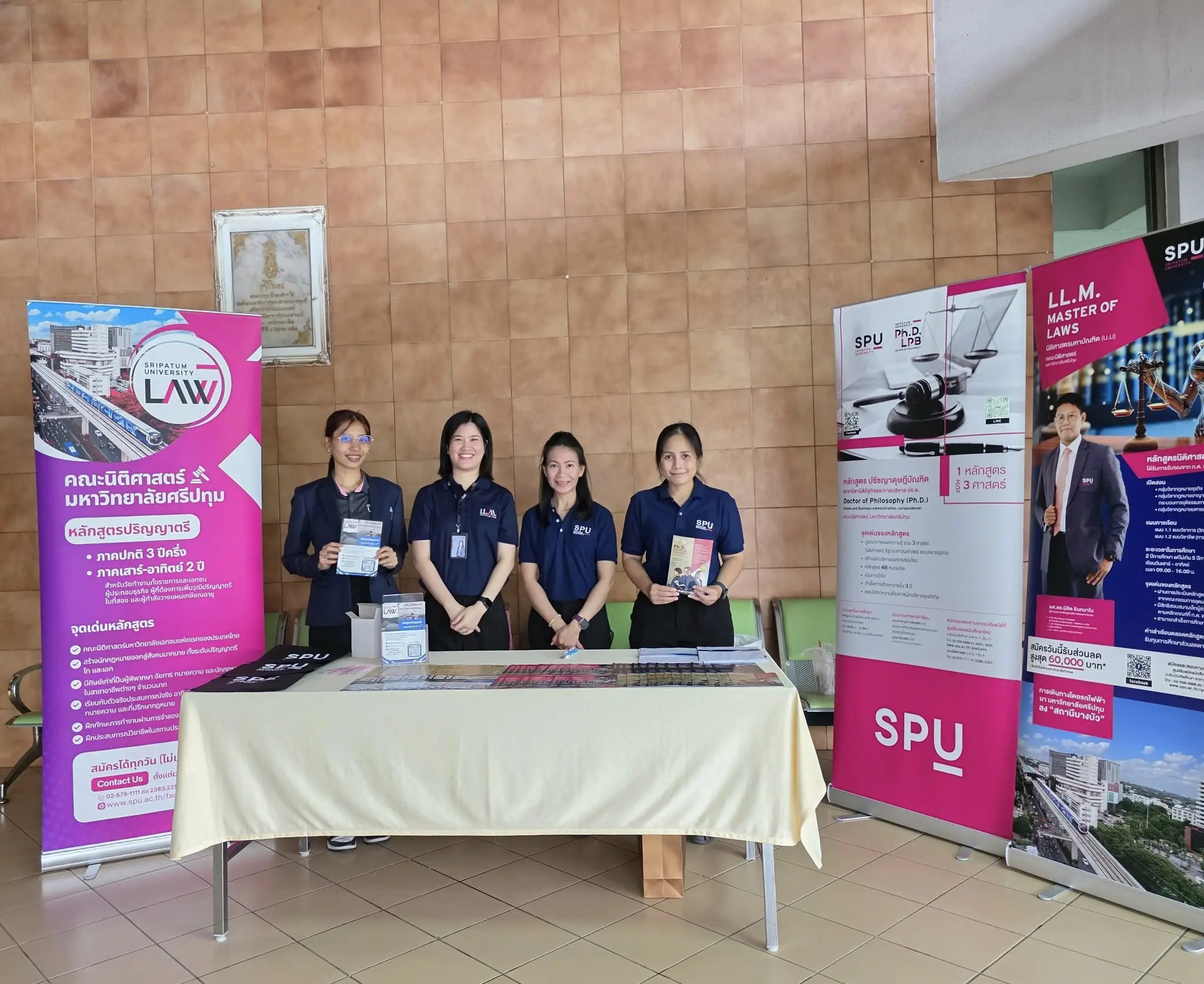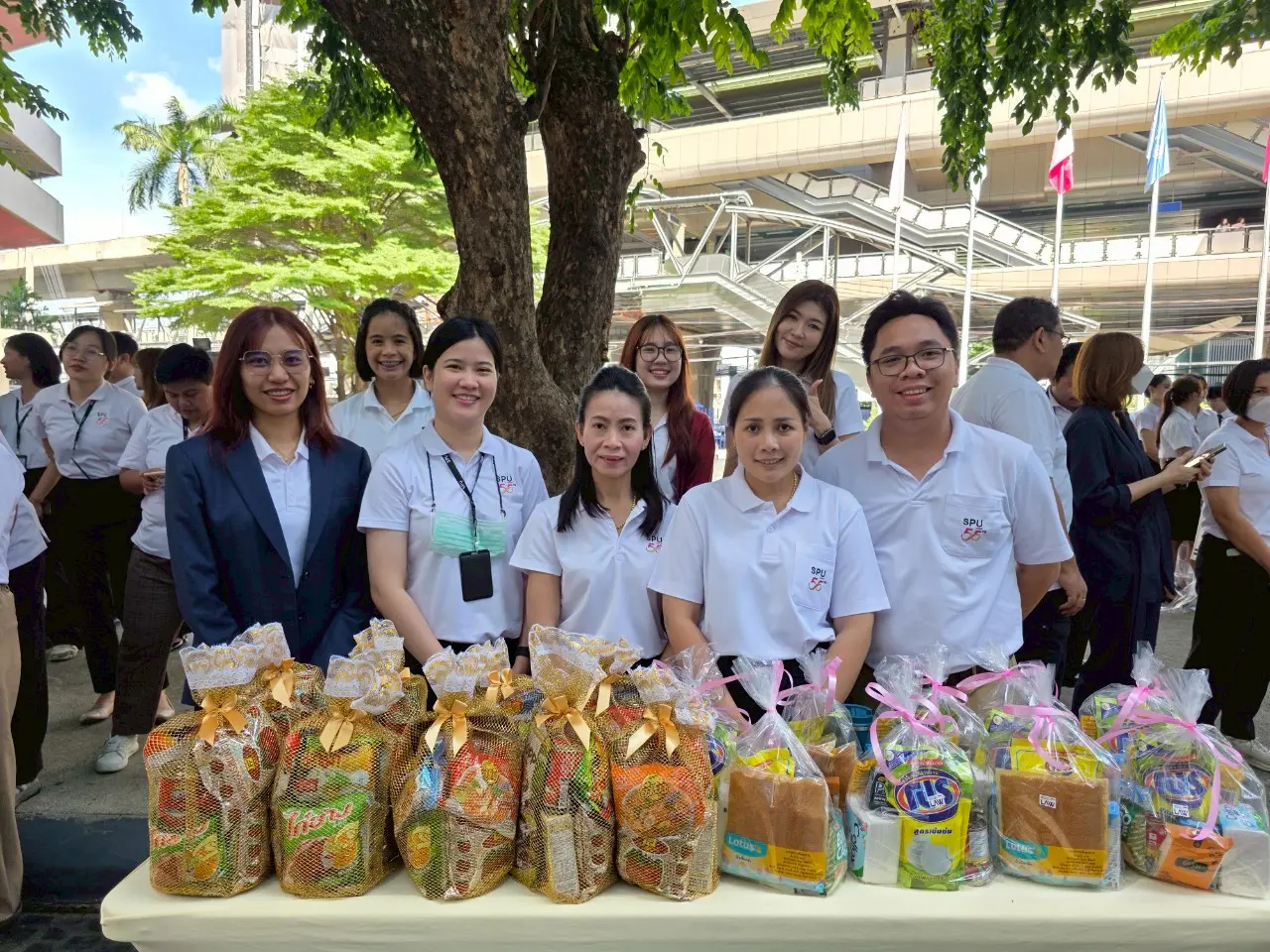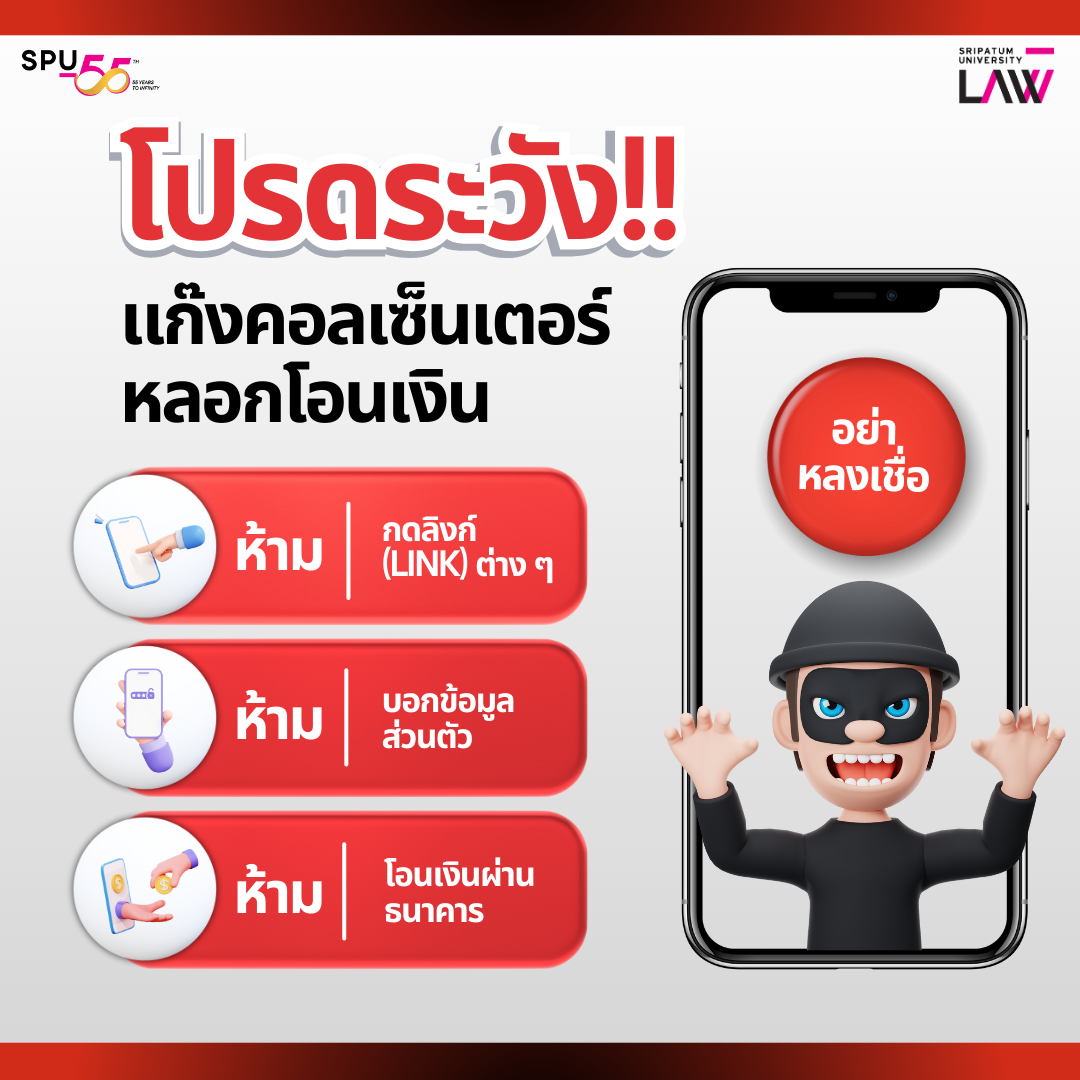Faculty of Law, Sripathum University
Trademark means a mark, symbol or brand used with goods or services. There are 4 types of marks protected under the Trademark Act B.E. 2534, amended by the Trademark Act (No. 2) B.E. 2543, as follows:
1. Trade Mark is a mark used as a symbol in relation to products to show that the products using that mark are different from products using the trademarks of others, such as Breeze, Mama, Krating Daeng, etc.
2. Service mark is a mark used as a symbol or related to a service to show that the service using that mark is different from the service using the service mark of another person, such as the mark of an airline, bank, hotel, etc.
3. Certification Mark is a mark that the owner of the certification mark uses as a mark or in relation to products and services of other persons to certify the quality of those products or services, such as Shell Chuan Chim, Mae Choi Nang Ram, Halal, etc.
4. Collective Mark is a trademark or service mark used by companies or enterprises in the same group or by members of an association, group of persons or any other government or private organization, such as the Elephant Seal of Siam Cement Public Company Limited.
Registration of international trademarks under the Madrid Protocol
Currently, business operators use trademarks as a tool for trade, both domestically and for exporting goods abroad. Therefore, trademark owners need to register for protection in various countries before sending goods for sale to prevent trademark infringement and prevent anyone from registering their trademark abroad without being the owner. The Department of Intellectual Property has a policy to promote the service of requesting trademark protection abroad with convenience, speed, and cost savings by studying the guidelines for becoming a party to the Madrid Protocol.
If Thailand becomes a party to the Madrid Protocol, Thai entrepreneurs or exporters will benefit from being able to file trademark registration applications for protection in several countries at the same time, by filing only one registration application, using only one language (English, French or Spanish) and paying a single fee, which will result in convenience and speed in filing the registration application and save on travel expenses as well.
Registration Procedure
Application submission
It must be filed with the International Bureau of the World Intellectual Property Organization (WIPO) through the registry office of the applicant’s country of origin, which will verify and certify that the filed mark represents the goods and/or services specified in it and is identical to the Basic Application or Basic Registration.
An application for registration of a trademark to be submitted for international registration under the Madrid Protocol must be one that has already been filed or registered in the country of origin.
Registration Registration is divided into 2 steps:
1. International procedures
When the International Office receives an application for registration, it will conduct a formal examination for compliance with the criteria of the Madrid Protocol and the Common Regulations, the identification of the class and list of goods and/or services in accordance with the Nice Classification, and the payment of fees. If there are any deficiencies, the International Office will notify the country from which the application was made and the applicant. The applicant must correct them within 3 months or the application will be deemed abandoned.
2. Domestic procedures
When a party to the application for protection is received by the applicant, it will examine the application in accordance with the normal procedures for examining applications filed within its country. The examination of the substantive examination will be conducted in accordance with its domestic laws, such as examining similarity, distinctive characteristics or prohibited characteristics, etc. If there are any deficiencies, they must be corrected in accordance with the domestic laws of that country.
If there is a reason to refuse registration, the International Office must be notified within 12 months or 18 months or thereafter (in the case of an opposition request), otherwise the mark will be deemed to have been registered in the country where registration was requested.
Registration date has 2 cases as follows:
1) is the date of filing the application for registration with the Office of Origin Registration, if the application reaches the International Office within 2 months.
2) If it exceeds 2 months, the date on which the International Office receives the application shall be considered the registration date.
Duration of protection
10 years from the date of registration and can be renewed for another 10 year period. The renewal can be made 6 months before the expiration date or within 6 months after the expiration date, but an additional fee of 50 percent of the basic fee must be paid. It can be renewed only in some countries or all countries that are covered.
There are four types of international registration application fees:
1) Basic fee is the initial fee for filing one international registration application.
– Black and white mark 653 Swiss francs
– Colored mark 903 Swiss francs
2) Supplementary fee is a fee for more than 3 types of goods and/or services that are applied for registration, with a fee of 73 Swiss francs for each type of product and/or service applied for registration.
3) Complementary fee is a fee for the country specified for registration, 73 Swiss francs per country.
4) Individual fee is a fee specific to each country.
—————————————————————–
Reference: https://www.moc.go.th/index.php/2015-11-02-02-35-13/item/4222.html
http://www.ipthailand.go.th/th/dip-law-2/item/23-ตัวอย่างการเขียนแบบฟอร์มคำขอแจ้งขอรับความคุ้มครองเครื่องหมายการค้า.html
Download the full document and sample request form from the attached file.

